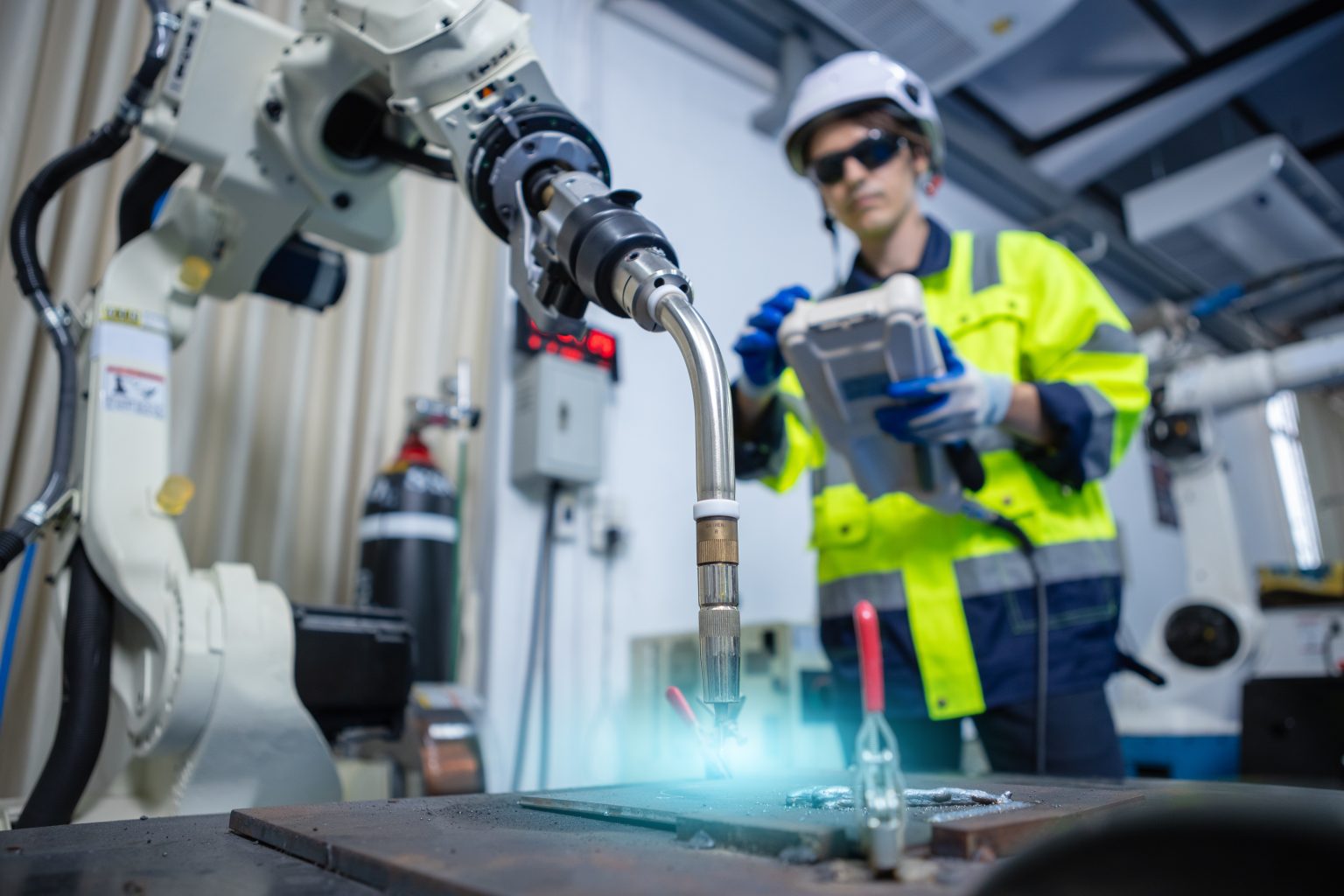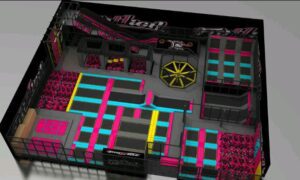In today’s fast-moving manufacturing world, using automation is essential. Manufacturers are increasingly utilizing robots to work more efficiently, reduce costs, and maintain consistent quality. Welding cobot have combined the accuracy of traditional industrial robots with the ability to work safely alongside human workers.
They handle repetitive tasks, speed up production, and ensure consistent weld quality, allowing your team to focus on more important work. Not all welding cobots are the same. Choosing the right cobot maximizes value, fits smoothly into your workflow, and improves efficiency. Knowing what a cobot can and cannot do is the first step to improving your manufacturing.
What is a Welding Cobot?
A welding cobot, or collaborative robot, is a robot designed to assist human operators with welding tasks. Unlike traditional welding robots that operate separately in safety cages, welding cobots can work safely alongside humans. They are precise, flexible, and easy to program using hand-guided teaching or simple interfaces. Welding cobots help get work done faster, keep welds consistent, and allow workers to focus on more complex tasks across various industries.
Why Choose a Welding Cobot for Manufacturing?
Welding cobots help modern factories overcome labor shortages, control costs, and ensure consistent quality by combining automation precision with human flexibility.
Higher Productivity and Efficiency
Welding cobots can work continuously without fatigue, handling repetitive tasks while human workers focus on more complex jobs. This reduces cycle times and increases overall production.
Better Weld Quality and Consistency
Cobots deliver precise, repeatable welds, reducing defects and rework, and ensuring products meet high-quality standards.
Solving Labor Shortages
Cobots manage repetitive welding tasks, ensuring production remains smooth and consistent even when skilled welders are in short supply.
Improved Safety and Ergonomics
Welding can expose workers to heat, fumes, and repetitive motions. Cobots handle the risky tasks, reducing health hazards and workplace injuries.
Cost-Effective and Scalable
Cobots are affordable, easy to set up, and can scale gradually as production grows.
Welding cobots enable your business to work faster, deliver higher-quality welds, and maintain a safer workplace, giving you a competitive edge in the industry.
Training Requirements and Ease of Adaptation
To effectively operate and adapt to welding cobots, operators should possess the following skills and qualifications:
- Completion of manufacturer-specific robotic programming courses or e-learning modules to ensure familiarity with the cobot’s software and control systems.
- Hands-on welding experience, ideally at least three years in related roles, to apply practical welding knowledge during automated processes.
- Understanding of safety standards and risk assessment procedures relevant to robotic welding, ensuring safe operation alongside human workers.
- Proficiency with programming interfaces, including teach pendants and hand-guiding methods, for efficient setup and task execution.
- Ability to integrate advanced tools, such as seam tracking systems, adaptive welding sensors, and supporting equipment, to optimize weld quality.
- Knowledge of maintenance protocols to ensure the cobot remains reliable and operational over time.
- Troubleshooting skills to identify and resolve common operational issues quickly, minimizing downtime.
- Commitment to continuous learning to stay updated on the latest advancements in cobot technology and welding techniques.
Key Factors to Consider When Choosing a Welding Cobot
Intuitive User Interface
Select welding cobots that are easy to use. Modern cobots let operators set up tasks by showing the robot what to do, using touchscreens, or controlling it with a phone or tablet. Welders don’t need coding skills and can focus entirely on welding.
Flexibility in Welding Solutions
A high-quality welding cobot should support multiple welding methods, including MIG, TIG, and spot welding. Select cobots with adequate reach, payload capacity, and compatibility with your existing equipment. Flexible cobots can handle small production batches efficiently and adapt quickly to changing manufacturing needs.
Easy Installation and Maintenance
Select cobots that are quick to install and easy to maintain. Modular designs simplify repairs, reduce downtime, and require less external support. Easy access to replacement parts and local service helps keep the cobot running efficiently.
Stable and Consistent Results
High-quality, repeatable welds are essential. Cobots should maintain precision within ±0.1mm, using real-time monitoring, adaptive controls, and proper fixtures or jigs. Stable operations reduce defects and the need for rework, ensuring consistent product quality.
By taking these factors into account, manufacturers can select welding cobots that increase productivity, deliver precise welds, and improve workplace safety.
Benefits of Implementing Welding Cobots
Enhanced Welding Precision
Welding cobots deliver accurate and consistent welds with even bead placement. This reduces mistakes like undercutting or slag, lowers material waste, and saves time and money.
Greater Productivity
Cobots can perform repetitive welding tasks quickly and without breaks. They work continuously, achieving up to 90% arc-on time compared to 30% for human welders, which greatly boosts production and reduces downtime.
Improved Worker Safety
Cobots perform dangerous welding tasks, keeping workers away from extreme heat, bright sparks, and harmful fumes. This makes the workplace safer, lowers the risk of injuries, and helps reduce costs.
Overcoming Common Challenges When Using Welding Cobots
Using welding cobots in manufacturing can boost productivity and ensure consistent weld quality. But, like any new technology, there are some challenges. Here’s what to watch out for:
Shortage of Skilled Welders
Many welding companies struggle to find enough experienced welders. Cobots can handle repetitive tasks, freeing skilled workers to focus on more complex work. Plus, their easy-to-use controls make it simpler for less experienced staff to operate them.
Working with Existing Equipment
Older machines may not easily work with cobots. Working with experienced integrators can help set up cobots so they fit in smoothly without interrupting production.
High Upfront Costs
Cobots can be costly to buy and set up. However, they save money over time by increasing productivity, lowering labor costs, and producing better-quality welds.
Training and Learning Curve
Staff need proper training to operate and maintain cobots. Providing thorough training programs and ongoing support makes the transition to automated welding easier.
Safety and Compliance
Cobots work close to people, so keeping everyone safe is very important. Utilizing features such as collision detection, emergency stop buttons, and adhering to safety rules helps prevent accidents.
Conclusion: Welding Cobots in Modern Manufacturing
Welding cobots are transforming manufacturing by combining precise automation with the ability to work safely alongside humans. They help manufacturers address labor shortages, boost productivity, maintain consistent weld quality, and enhance workplace safety.
Selecting the right cobot is essential. Choose user-friendly cobots that support multiple welding methods, are easy to install and maintain, and provide reliable results. Proper training and continuous adaptation ensure operators can fully leverage cobot capabilities while maintaining safety and efficiency.
When implemented thoughtfully, welding cobots can reduce costs, minimize errors, increase production, and create a safer, more efficient workplace, giving manufacturers a strong competitive edge in today’s fast-paced industry.



































